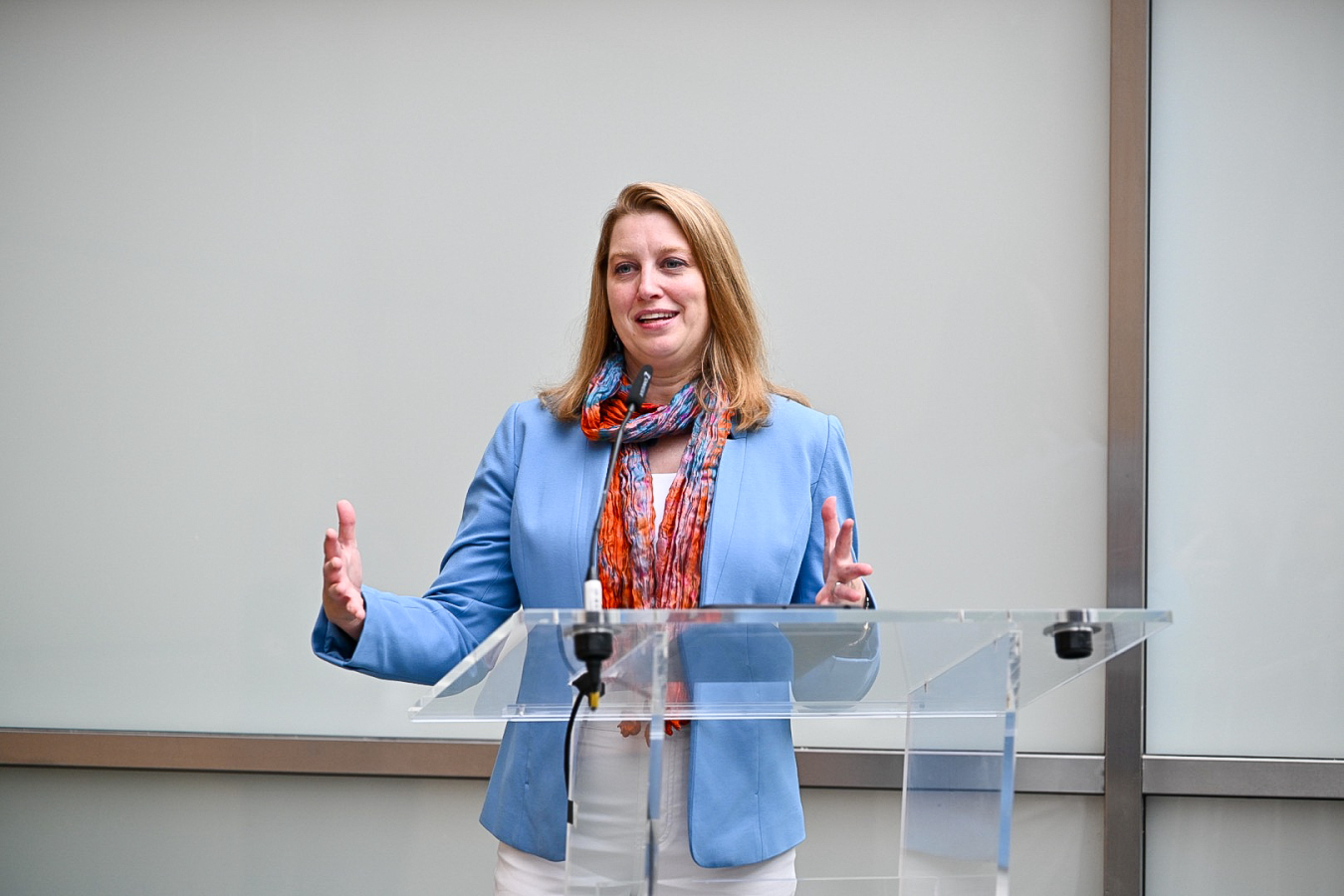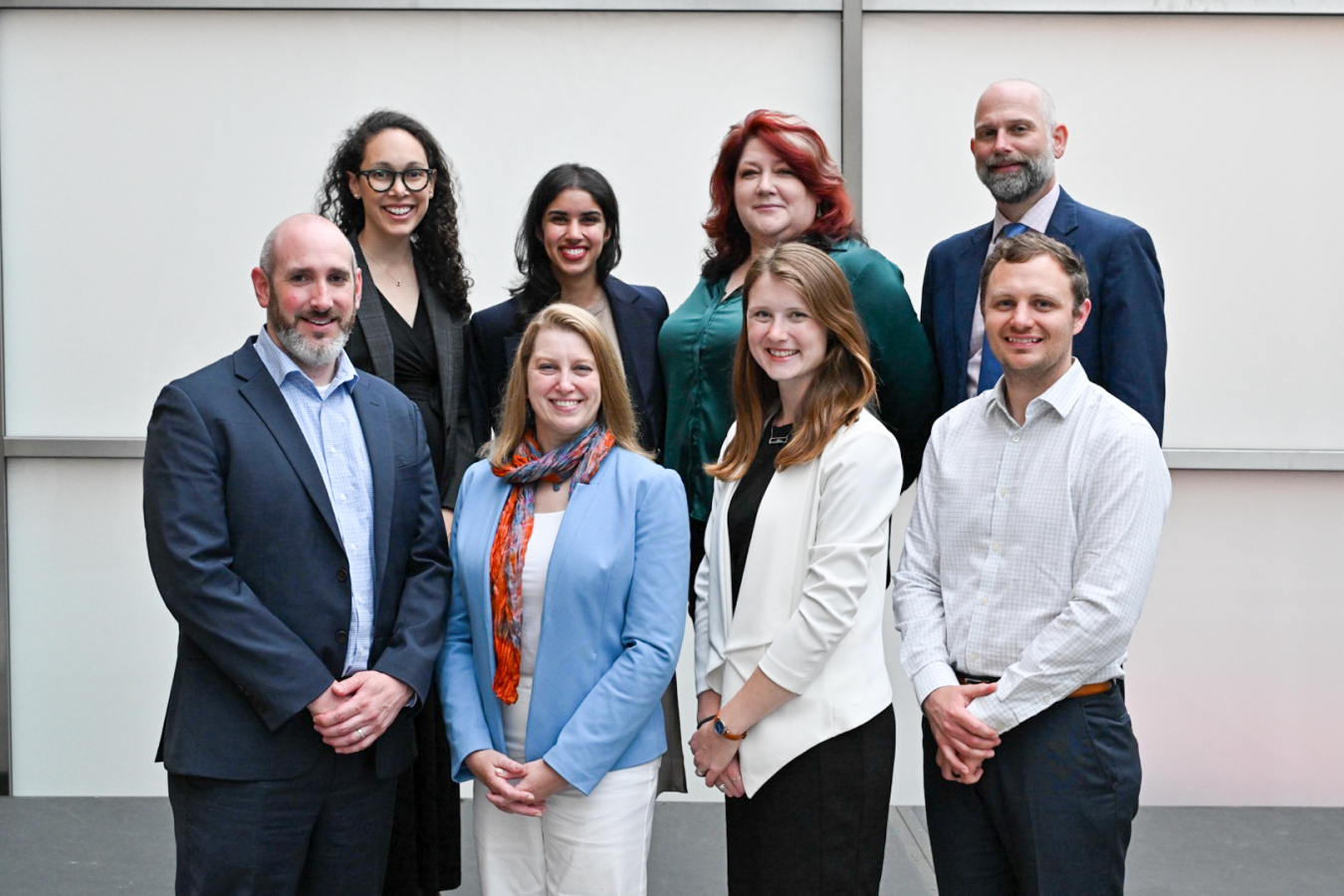NNSA Acting Principal Deputy Administrator Hinderstein discusses how the IPNDV continues to add value to monitoring and verification efforts a decade after its creation.
National Nuclear Security Administration
June 27, 2024
Remarks, as prepared, for the International Partnership for Nuclear Disarmament Verification 10th Anniversary, Geneva, Switzerland, June 26, 2024
Thank you, Bruce, for that kind introduction, and along with Ambassador Thoni, for inviting me to join you this evening. It is a real pleasure to be here in Geneva to mark the International Partnership for Nuclear Disarmament Verification’s tenth anniversary.
It is so good to be back with IPNDV! My involvement with the Partnership actually predates its founding in 2014, and it is great to see so many colleagues and friends here this evening.
This evening, I’d like to reflect on why this Partnership was created a decade ago, how it has changed over the last ten years; and how the IPNDV continues to add value to the monitoring and verification discussion.
More than anything else, however, I hope you take away one thought from my remarks this evening: Although we face an increasingly challenging international environment, one that seems particularly inhospitable to future arms control initiatives, the current pause in formal arms control provides a unique opportunity to step back and ask more fundamental questions: What do we want arms control to look like? What will future verification demands will look like? How can IPNDV contribute to the that future?
Present at the Creation
But first, I would like to take a moment to look back at how this all started.
In July 2014, the Nuclear Threat Initiative concluded a multi-year effort called the Verification Pilot Project. I was thrilled to lead this project in collaboration with senior leaders from the U.S. Departments of State, Defense, and Energy – to include the National Nuclear Security Administration – as well as the governments of Norway, Sweden, and the United Kingdom. This effort was inspired by previous work at NTI but also the groundbreaking work of the UK-Norway initiative, which was a main reason that a key pillar of the Pilot Project was focused on the important role of non-nuclear weapon states.
Together, more than 40 policy and technical experts from around the world explored new approaches to verification that could prompt near-term progress on non-proliferation and nuclear security, and enable future progress on arms reductions.
The results of the verification pilot project were published in a four-report series – titled Innovating Verification: New Tools and New Actors to Reduce Nuclear Risks.
The reports called for the international community to fundamentally rethink the design, development, and implementation of arms control verification, and our key recommendation was for countries to come together to begin an international process to assess verification gaps, develop collaborative work streams, and contribute to overall global nuclear threat reduction.
While sometimes making policy recommendations from civil society feels like shouting into a hurricane, apparently the international community saw the same gaps we had identified. In December of that same year, Rose Gottemoeller and the U.S. State Department announced a new public-private international partnership on nuclear disarmament verification to engage a diverse group of states – both with and without nuclear weapons – to increase understanding of verification challenges and to develop new verification approaches.
From Paper to Practice
Over the past decade, it has been exciting to see the IPNDV move from paper to practice as it progressed through its three phases.
Phase I focused on verification of the physical dismantlement of a nuclear weapon, identifying the 14 key steps in the dismantlement lifecycle that laid the groundwork for the subsequent phases.
Phase 2 extended this work by identifying technologies and procedures that can be applied at each of these 14 steps, as well as characterizing other monitoring and verification considerations, such as state declarations and treaty limitations. This phase also saw the development and execution of collaborative tabletop and physical exercises, as well as technology demonstrations.
Phase 3 was in some ways the most challenging period, as the Partnership had to adapt to not being able to meet in-person during the COVID pandemic. Yet through virtual meetings, hands-on activities, the resumption of Nuclear Disarmament Verification Exercises, and further tabletop exercises, the partner nations have demonstrated how concepts and other elements of the overall verification “tool-kit” developed in Phases I and II can be implemented.
Whereas in 2014 only a small handful of countries had deep experience with nuclear disarmament verification, under the Partnership’s auspices dozens of experts from 30 countries have developed over 60 papers, participated in technical demonstrations, and created technical resources. These products are vital to the efforts to develop verification mechanisms for future nuclear disarmament, and help to create a common language, and build trust in a spirit of collaboration between nuclear and non-nuclear states. Moreover, the collaborative nature of the IPNDV has created an atmosphere in which government experts can come together without the formalities of prepared statements and talking points to talk frankly, to stimulate new ideas and understandings, and to remove barriers to action. I know that we in the United States have benefited greatly from this collaboration. I’m proud to note that NNSA has supported the Partnership since its inception and looks forward to sustaining and even growing our involvement with IPNDV.
IPNDV and the Future of Arms Control
Now, to be blunt, any major arms control agreements with China and Russia are likely unattainable in the near-term. We face a volatile international environment, one in which the expansion of nations’ nuclear weapons stockpiles and their delivery systems – coupled with increasing regional conflicts involving nuclear weapons states – pose significant challenges. Russia has repeatedly rejected talks on a successor pact to New START, which expires in 2026, and China has declined to discuss its expanding nuclear arsenal. Consequently, the breadth and depth of this pause in arms control may be greater than what we worried about years ago.
I still believe there is a light at the end of the tunnel, however . . . even if I hoped the tunnel would be shorter. Just as the Partnership weathered the challenge of not meeting in-person during COVID, we need to be able to weather the challenge of a down time in arms control. We can use this pause to step back and ask in fundamental ways what we want arms control to look like five, ten, and twenty years from now, and what future verification demands may entail. Whereas START, START II, and New START ran along a similar track and built upon another, we now have an opportunity for creativity in imagining next steps that wouldn’t be possible if we were narrowly focused on negotiating New START’s direct successor. For example, will we focus on numbers or capabilities? Delivery systems or warheads? Production or deployment? Locations or posture? And how can we apply critical and emerging technologies like space-based platforms, data science and artificial intelligence evolutions, or remote, unattended and uncrewed sensors to the verification toolkit? And how will an anticipated increase in civilian nuclear programs facilitate or complicate verification monitoring?
All ideas for both structures and verification are both off-the-table and on-the-table at the same time . . . you could say we are in sort-of “Schroedinger’s Arms Control” moment.
As we think about how arms control could look different in the future, we must consider how the IPNDV may (and maybe should) also look different to inspire and support that future. The Partnership has demonstrated its resilience, and must continue to evolve.
Conclusion
If verification is a necessary precursor to any effective future nuclear disarmament agreement, then breakthroughs in disarmament verification can actually help to create the space for future arms control opportunities. As we noted ten years ago in the Innovating Verification report: “New and proven verification tools and approaches can be empower decisionmakers to press for action if they are confident that nuclear reductions can be successfully implemented, but these instruments take time to develop.”
In other words, this present pause is precisely the time to work together to re-energize this Partnership and to explore new concepts and approaches to finding long-term solutions to the technical challenges of verifying nuclear reductions.
Thank you again, Ambassadors Turner and Thöni, for the opportunity to speak to you this evening and to participate in this celebration. I enjoyed this afternoon’s panels and look forward to tomorrow’s interactive discussion and symposium.
Finally, thank you all for your hard work and commitment to this important mission.


